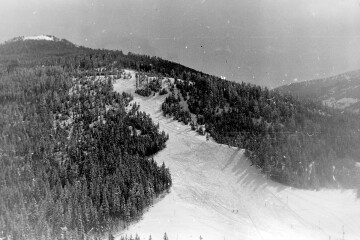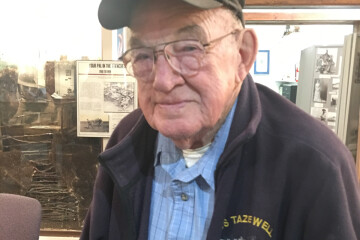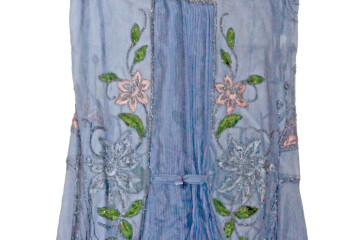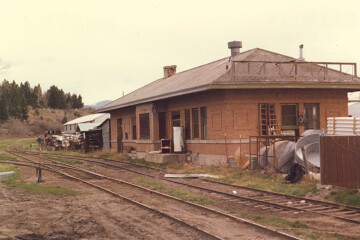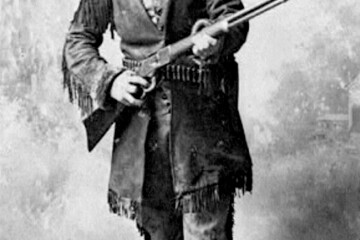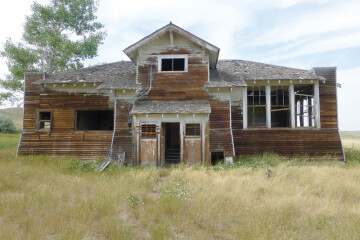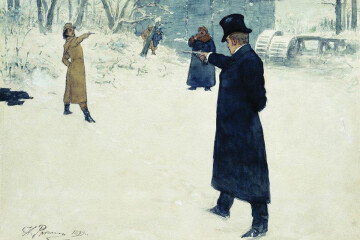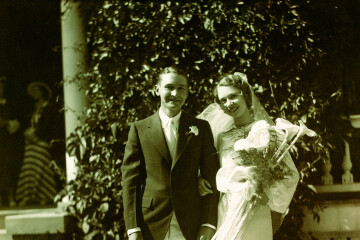Bozeman's History: A Love Story
In the later part of her life, Mrs. Sarah J. Tracy (the wife of William H. Tracy) stated that “My love of our town has grown with the years, and I think of it always by the name Davis Willson used to call it: ‘Bozeman the Beautiful.’” Mrs. Tracy’s devotion to her town and community is a theme that is echoed by other personal accounts of Bozeman’s history. While early experiences of the region by trappers and miners reflect the rugged individualism often assigned to the American West, the success of the Gallatin Valley’s communities would not have been possible without community spirit and neighborly kindness. The Gallatin Valley’s history is characterized by interpersonal relationships. Personal connections, friendships, team spirit and love for community continue to define the region’s culture. Visitors to the area often remark upon the friendly and open demeanor of Gallatin Valley residents - an atmosphere cultivated by more than a century of community participation and solidarity. Although the origin of this comradery may be the cooperation necessary for survival on the frontier, the Gallatin Valley’s sense of community has been developed over the years with dances, sports, organizations, clubs, churches, fairs, and acts of kindness. This article, in honor of Valentine’s Day, draws upon the archives and oral history records of the Gallatin History Museum in order to highlight some of the love that helped build and distinguish these unique towns and their heritage.
For those experiencing the difficulty of finding romantic love in our modern times, some consolation may be found in the predicament of the many bachelors of early Bozeman, who often had to travel back east in order to find women to marry. Sarah Tracy recounts that her arrival in Bozeman as a young bride was quite a spectacle, and describes that the town perceived her as an “object of curiosity.” Increasing numbers of Bozeman men were becoming interested in traveling east to find brides, but Mrs. Tracy points out that because this journey was so expensive and time consuming, many of them were “anxious to see how the investment would ‘pan out.’” This, she surmises, was the reason so many Bozeman bachelors congregated in front of the Guy House Hotel on June 5, 1869. Mrs. Margaret Boylan recounts in an interview that she remembers her parents talking about a male store owner who sent back east to “the Heart in Hand,” a place where “you put that you want to get married and get out here, get west, and get married!” She describes the lady in question as “a good woman, a good helper, nice looking lady, and my mother and them got to be great friends.” These women were welcomed into the community with an equal amount of generosity and curiosity.
In historical accounts of Bozeman, statements about love and relationships are, at best, brief and factual. Very few express the emotion inevitably felt by humans in any historical context. Because of this, simple statements often contain much more than it may seem at first glance. On the day of her wedding, the soon-to-be Mrs. Tracy writes “Today happens to be the eventful day of my life. I was married to William Tracy today - the man of my choice.” Two months later, she writes often about being lonely on account of her husband’s absences, and refers to him as “my William.” These small admissions of tenderness are often absorbed in lengthy descriptions of housework, farm work and local events, preserving the privacy of these frontier romances. Sarah Tracy does mention, however, an occasion on which she and William spent the day scrubbing floors together and conducting “a big washing” - surely the ingredients of a solid marital bond! In 1915, Leeta Scow Townsend, the daughter of Manhattan settlers, married Charlie Townsend, who “lived across the road from us.” When asked if they were childhood sweethearts, she responded simply that the two “always went everywhere together. Then we were married in ‘15. We’d been going together a lot of places before that.” The couple started homesteads and raised cattle in the Horseshoe Hills, and celebrated their 50th anniversary in 1965.
An emphasis on marital happiness and love was surprisingly prominent during this period. Doctor John C. Gunn, the author of the 1860 publication Gunn’s New Domestic Physician, or Home Book of Health, a book owned by one early Gallatin Valley settler, dedicates many illustrious chapters of his book to advice on how to conduct a successful and happy marriage. Gunn, whose book begins by stating that “disease is not unfrequently the mans of leading to the path of Virtue,” instructs readers that “Love is the divine essence of our being.” He also recommends that people not marry those to whom they are closely related. Gunn’s marital advice extends into the behavior of the husband and wife, including a suggestion to men to “never run on in enthusiastic encomiums on other women in the presence of your wife.” Gunn also comments on the disadvantages of marrying for money: “the greatest enemy of true love, in the present day, is the mercenary spirit of the time.” This book gives us some sense for what some considered to be an ideal partnership during the second half of the nineteenth century.
Perhaps even more integral to the foundation of a strong community were the friendships and partnerships formed among the Valley’s earliest settlers. The frontier is often thought of as a land of quick tempers, long grudges and fierce independence, but settlers and miners depended on friendship and collaboration, no matter how small the community might have been. Mabel A. Ballantyne, whose accounts of life as a homesteader are harrowing, also describes the relationships and acts of kindness that helped settlers adjust to and survive their new homes. She mentions that when three nearby families moved north to new homesteads, she and her husband “felt sort of deserted and lost. But they were good about writing and keeping us informed about the new country and encouraged us as best they could.” During the winter of 1919, the family was hit by the flu pandemic. Ballantyne mentions that “the Stucky boys hauled the hay to the stock a couple of days and Mrs. Hultgren came a day or so when I was the sickest, and helped with the children and got the meals for us….We did have a Mrs. Davis come and help keep house for us for a week during the worst part of the time.” These types of memories are found in almost every oral history and diary in the Museum’s collection. Sarah Tracy recalled that “In all there were just fourteen women in the town in 1869, but they all vied with each other to help us and to make us welcome.”
This attitude of generosity and community spirit is emphasized in Mrs. E. Lina Houston’s Early History of Gallatin County. Houston is the daughter of one of Bozeman’s town founders, W.W. Alderson. She introduces her book by presenting her father’s description of early pioneers as “ever ready to respond generously to the faintest call, not only of want or suffering, but of any charitable or deserving enterprise.” Although her book is overwhelmingly factual, Houston devotes a special section to the women of Gallatin County’s early years: “The pioneer women were devoted to their homes and their families and were ever ready to lend a helping hand to those in need and to extend comfort in time of sorrow and affliction.” This statement describes the same bonds of fellowship described by Mrs. Tracy.
One of the great joys of working with historical archives is coming across so many instances of generosity and kindness among the stories of those who persisted in order to make a small frontier town into a thriving community. Accounts from the descendants of the Gallatin Valley’s earliest families emphasize not only the tremendous amount of work that homemaking on the frontier entailed, but also the extraordinary resilience of people in the Valley. This spirit continues to inspire the county’s giving spirit and ever-expansive friendships.

